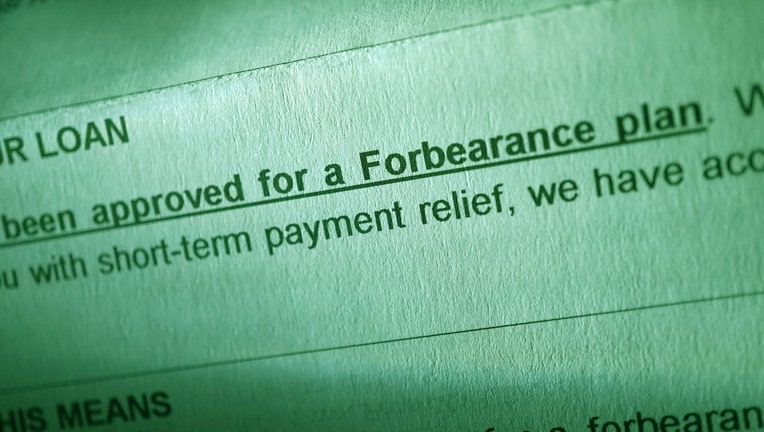Biden extends foreclosure moratoriums — what to do if you need mortgage help

If you can't make your mortgage payments, there's help available. (iStock)
On his first day in office, President Joe Biden signed multiple executive orders, including a bill to extend an eviction and foreclosure moratorium on federally backed mortgages. Following the executive order, the U.S. Department of Agriculture announced they would extend the moratorium for USDA Single Family Housing Direct and Guaranteed Loans through March 31. The U.S Department of Housing and Urban Development also announced that they extended the moratorium through March 31.
The Mortgage Bankers Association reported that an estimated 2.8 million homeowners are taking part in forbearance plans or an estimated 5.37% of all mortgage borrowers.
If you don't qualify for federal relief, you may want to consider refinancing. Credible is your go-to resource for all refinancing needs. Just plug some information into Credible's free online tools to view rates and lender options available to you.
What are my mortgage relief options?
Homeowners who cannot make their monthly payments are at risk of losing their homes and causing severe damage to their credit. If you are a homeowner and you're struggling to make your mortgage payments, you have options.
- Federal mortgage forbearance
- Mortgage refinancing
- Lender-specific help
1. Federal mortgage forbearance
Homeowners with a federal loan (FHA, VA, USDA, etc.) may qualify to reduce or pause payments on their mortgage payments for a set amount of time. Your lender may allow you to add the payments to the end of your loan or ask you to pay what you owe once the forbearance concludes. If you don't have a federal mortgage, you may still ask your lender if they're willing to consider a loan forbearance.
WHAT TO DO WHEN YOUR MORTGAGE FORBEARANCE ENDS
2. Mortgage refinancing
If your home is not in forbearance, you may be able to qualify for a mortgage refinance. Interest rates are sitting at near historic lows. If you have good credit, you may be able to refinance your loan to reduce your monthly payments. Millions of Americans are already taking advantage of the lower rates.
According to the Mortgage Bankers Association, most new loan applications are for refinances. In early January, refinances made up more than 70% of all new loan applications. You may be able to qualify for a refinance after a forbearance if you've paid the last three months of your mortgage payments on time.
To determine if a refinance is a good option for you, use an online mortgage calculator to determine potential new monthly costs. You can also reach out to experienced loan officers on Credible to have your mortgage questions answered.
3 SIGNS YOU SHOULD REFINANCE YOUR MORTGAGE RIGHT NOW
3. Lender-specific help
If you don't have a federally backed loan, you may still be able to receive help. Many lenders have some programs available to assist homeowners. Head to Credible to learn more about your options.
HOW TO GET THE BEST MORTGAGE REFINANCE RATES
What to do after moratorium ends
Biden's decision to extend the moratorium means that even if you don't make payments, the VA and USDA cannot foreclose on your home until after March 31. Fannie Mae and Freddie Mac may not foreclose on homes until after February 28.
If you are still struggling to make your house payments after the moratorium ends and you're unable to qualify for a forbearance, here are a few other things you can do:
- Contact your lender
- Mortgage refinance
- Minimize other debt
1. Contact your lender
Your first step should be to contact your lender. Banks and mortgage lenders don't want to foreclose on homes. It takes a lot of time, and it can be expensive. Many are willing to work with you and may even offer options for changing loan terms (like payment due date or minimum payment).
2. Mortgage refinance
Refinancing your mortgage could offer a longer-term solution since reduced rates and/or reduced monthly payments last for the loan's life. While it's always worth considering the cost of a refinance (it can be several thousand dollars), it may be worth the added total to your loan if you're able to reduce your monthly payment quickly so you can stay in your home.
Keep in mind that all new refinances over $125,000 are subject to a 0.5% adverse market fee. The fee on a $300,000 loan would total $1,500. This fee is in addition to any closing costs.
With lower interest rates and higher consumer interest, many lenders are tightening their lending requirements. Make sure to get your credit score in order before applying for a refinance to secure the best rates. You can get prequalified rates without affecting your credit score at Credible.
HOW A HOME REFINANCE COULD SAVE YOU MORE MONEY
3. Minimize other debt
Ideally, you would time in forbearance to pay off additional debt. You could also take out a personal loan to consolidate high-interest debt into one payment. In many cases, debt consolidation can reduce the total you pay each month, freeing up extra cash to put towards your mortgage payment.
If you're interested in a personal loan, check out an online tool like Credible to view your loan options from multiple lenders in one place and with fewer forms to fill out.
Millions of Americans are struggling as communities continue to work towards reopening the economy. If you've been affected by the pandemic, there may be help available. Don't wait.
MORTGAGE RATES HIT A 'SWEET SPOT' — WHY IT'S THE PERFECT TIME TO REFINANCE

